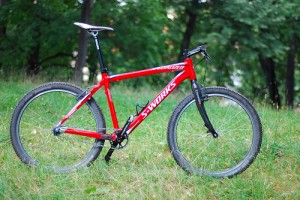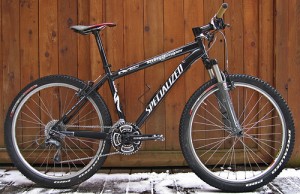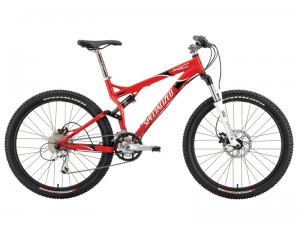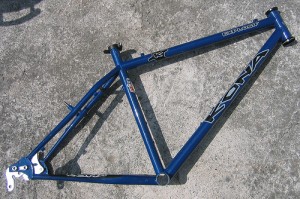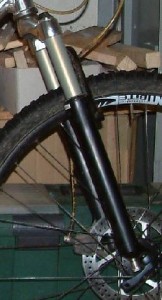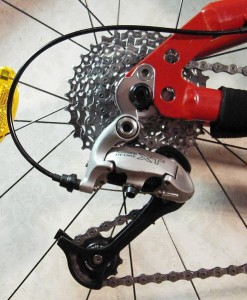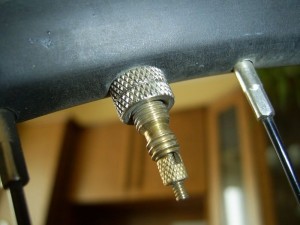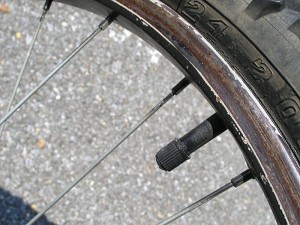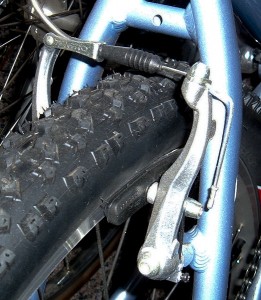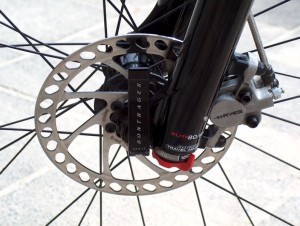Buying a mountain bike in Egypt: a beginner’s guide
Although buying a bicycle should be a fairly easy decision considering the relative simplicity of the basic design, you are going to want to invest in a quality bicycle with a good frame and decent components. You will find a huge number of articles on the Internet that cover this subject very well. What this guide is going to add is information on buying a good bicycle in Egypt, considering the dearth of bike shops that carry good brands and there general lack of information on the subject.
Assumptions made when writing this guide are that you 1) are a beginner, 2) have a limited budget and 3) live in Egypt
Your decision to buy a bicycle should take into consideration the following four main factors:
- The type of riding you intend to do
- Your budget range
- Bicycle size and fit
- Where to buy your bicycle?
————————–
1. The type of riding you intend to do:
Being an MTB-focused website, our focus will be off-road riding. But many of us will also want to ride in the city, and not exclusively do off-road/trail/mountain riding. Also, many do not not have the luxury of having multiple bicycles for different purposes. The great thing about mountain bikes is that they can be excellent multi-purpose and multi-terrain bikes. The frequency of your off-road riding and your own usage pattern will decide things like the type of frame you should get, the choice of tires to have on your bike, brake system choice, etc. These choices will of course be constrained by point “2” above (your budget limits). Let us first address frame types:
There are three general choices for a mountain bike frame:
A rigid (unsuspended) mountain bike Picture source
1- Unsuspended (rigid) frames: The bicycle will not have any form of suspension (like a road bike). Usually the cheapest option. Suitable for riding on smooth trails, as rougher terrains will give you rides that will probably be painful, at best. However, the lack of suspension will give you better pedaling efficiency on paved surfaces, as there will be no unneeded suspension “bob” that would otherwise happen with suspended bikes (with no suspension lockouts, at least).
A hard-tail mountain bike Picture source
2- Front suspension (hardtail) frames: The bicycle will have a front suspension “fork”. The rear wheel is unsuspended. This type of bike is usually what a beginner should get. Hard tail bikes are light, efficient and climb well. They also require relatively less maintainance (no rear suspension shock absorber or pivots). The average price point for entry-level to mid-range hard tails are also usually significantly less than similarly speced full-suspension bikes.
A full-suspension mountain bike Picture source
3- Full suspension frames: These are bikes with both front suspension forks and some form of rear suspension, like a suspension “shock”. They are also heavier, and will require more maintainance. If you will get into riding in the rough stuff or as your riding style becomes more aggressive and technical, you are going to want to invest in a quality full suspension bike.
Full suspensions are, on average, the most expensive bikes. Let the buyer beware though, getting an expensive hard tail is always better than a cheap full suspension bike. Cheap components will give you bad handling, unacceptable reliability and will probably make you hate the sport. If your choice is between a high-end hard tail and a low-end full suspension, I’d go with the hard tail. If you have the money to buy a mid-range to high-end full suspension, go for it! It will give you better off-road handling and a smoother ride. Look for suspension “lock-outs” on front and rear shocks so that you can lock out the suspension when riding on paved roads for the sake of better pedaling efficiency.
————————–
2- Your budget range:
You can get a “mountain bike” for as low as L.E. 500, but chances are its going to fall apart the first few rides. Part of enjoying mountain biking is riding a quality bicycle, which you will probably not be able to find for less than L.E. 1,500-2,000 for a basic, entry level bike. As a rule of thumb, you should always get the best bike you can afford. An entry-level to mid-range hard-tail is usually your best bet (as a beginner) in terms of components and price point. At this price range, you should focus on getting as good a frame as possible, and you can always upgrade the components later. Now lets take a look at what makes a good starter mountain bike:
The Frame:
A Kona mountain bike frame Picture source
You should get a light but solid aluminum frame. Generally speaking cheap steel frames are heavier if low quality. However, quality steel tubing is popular with frame builders who make solid all-mountain hard tail frames (such as Cotic, Evil Bikes, Chromag, among others). Carbon, Titanium or Scandium frames are much lighter but also much, much more expensive than the purposes of this article. In the interest of being able to upgrade components later, look for disc brake mounts on both the frame and the fork.
Suspension-fork:
Look for one with at least 70 mm of travel and preferably a suspension lockout (which will allow you to lock out the suspension when you are riding on paved roads for better pedaling efficiency). More expensive forks will offer you: Longer suspension travel, better adjustability depending on terrain and rider preference, such as rebound adjustment (how fast the shock will rebound to its original length after compressing to absorb a terrain bump) and a generally better build quality. You should know that some suspension forks cost more than complete bikes :), but we’re focusing on the entry-level stuff here.
Components and drive train: The transmission system is mostly either made by Shimano or SRAM. There are component “levels”. For example, Shimano’s component tiers, in order from the highest end to the lowest end, are:
XTR (higest end)
Deore XT
Deore LX
Deore
Alivio
Acera
Altus
Tourney (lowest end)
and SRAM’s…
X.0 (highest end)
X.9
X.7
X.5
SX4
3.0 (lowest end)
A Shimano XT rear derailleur
Higher end components are, unsurprisingly, better performing. However, for a beginner biker you should be fine with the lower end to mid-range Shimano components or SRAM, but try to go for something with components at least in the Alivio/SX4 range.
Wheels and tires and tubes:
- Wheels will mostly be made out of aluminum (higher end are made of fancier materials, like carbon fiber) and should be pretty standard on bicycles in this range. If you can, try to get a bike with disk brake-ready hubs (the hub is the part right in the center of the wheel, which allows it to spin when mounted to the front and rear drop-outs), so that you may be able to later upgrade your V-brakes to better gripping disk brakes (see brakes further down).
- Tires: Plenty of options here with respect to type, tread patters, material, etc. For off road use, you will need a fully “knobby” tire with at least 1.95′ of width for a good off-road grip. There is a type of tire called “semi-slick”, which is knobby on the sides and “slick” in the middle, which has relatively less rolling resistance on-road and will still be OK for riding smoother trails. For heavier off-road riding get wider , Kevlar bead tires. Higher-end tires include the tubeless variety, and those made from fancy compounds. Will discuss those in another article.
- Tubes: The only thing you need to know about tubes right now is the difference in valve types: There is the Presta valve, which is long and narrow, sort of what you find on a road tire, then there is the Schrader valve, which is fatter, shorter and looks rather similar to what you would find on a car tire valve.
- Aldactone street price
- Where can you buy combivent over the counter
- Where can i buy cipro
- Where can you get aromasin
- Where to buy telmisartan in albany
- Richmond fluconazole shipping
- Buy valtrex over the counter
- Buy januvia online canada
- Where to buy acyclovir in kentucky online
- Where to get combivent
A Presta tube valve…
…and a Schrader tube valve
Brakes: Two types of mountain bike brakes:
– V-brakes, which generate braking power out of the friction between the brake shoes on the metallic part of the wheel (rim)
– Disc brakes, which-like a motorbikes brake system- depend on friction between brake calipers on a metallic disc mounted to the wheel hub (in the center of the wheel).
As a general rule, disc brakes are better performing than rim brakes, but rim brakes will suffice for a beginner. Disc brakes are also more important in wet conditions (mud, for example) that may compromise the braking surface on rim brakes and thus negatively affect braking power. In Egypt, where we have very dry conditions, rim brakes should be all you need as a beginner rider. Disc brakes also require more periodic maintainance, especially the hydraulic type.
————————–
3- Bicycle size and fit:
Now that you know a little about components and should be confident enough to gauge the relative quality of bicycles on display at a bike shop, lets address the next important question: What bicycle size do you need? bear in mind is that we are talking about frame size, not wheel size (which is a standard 26′, with a specific variety of 29′ wheels)
You can get the most expensive bike in the world, but if doesn’t fit you, it will be only as good (or bad) as an L.E. 200 bike. Bike sizing is a topic on which there is some degree of debate, but there are some basic rules that you should follow. Professional bike shops will often happily take your measurements (height, arm length, torso length, inseam, etc.) and give you a frame size based on those measurements. At the time of this writing, there is no bike shop in Egypt that offers this service, so you will have to figure it out on your own, which should not be a difficult task.
Most mountain bikes are designed with the average body type in mind. The problem is, there is no hard and fast sizing standard that manufacturers agree upon and base their frame geometries on, so a size medium frame made by, say, Kona can be equivalent to a size large frame from Specialized. But despair not, fellow rider. There are much better detailed articles on the Internet on the issue of frame sizing, what we are going to provide is a quick method that would enable you to correctly figure out if a bike is the right size for you.
1- Get on the bike without sitting on the saddle. the distance between the top tube and your crotch should be a minimum of 7-10 cm. This is called “stand-over height”
2- Adjust the seat to be level with the handlebar. Sit on the saddle and grab the handlebar in the normal riding position. You will want to be nether too stretched out to the front, as if you are reaching for something, nor be in a very upright position. Generally speaking, your back should be at a 45 degree angle. A good riding position will provide a balance between stability and control on rough terrain on one hand, and speed and better aerodynamics on smoother surfaces.
3- While mounting the saddle, put one foot on the pedal, and extend your leg so that the pedal is at its lowest point. There should be a slight bend in your leg at this position.
A good rule of thumb according to height is:
155 cm-165 cm=small
170 cm-177 cm =medium
180 cm-185 cm=large
187 cm and taller =X-Large
Again, these are quick sizing methods. There are proper sizing techniques depending on your exact measurements and leg-torso lengths.
———————————-
4- Where to buy your bicycle?
1- Buy locally: Here is a review of some Egyptian bike shops.
2- Bring along a bike from abroad: Many airlines will carry bicycles for free as long as they’re partially unassembled and packed in a bicycle box. Here is a link to a very good website that has detailed information on baggage regulations for most Airlines. In our experience, you will not pay customs duties on a bicycle entering Egypt as sports equipment for personal use.
3- Look for a good used bike: Many riders sell their used bikes when they upgrade.
4- Import a bike (have it shipped to Egypt): the most expensive option, as you will probably have to pay at least USD 300-500 for shipping and handling alone, and then there is the unknown with respect to dealing with customs.
—————————————
Finally…
Now you should have a pretty good idea on where to start. have questions? Got tips to share? Or just want to talk mountain biking? Visit our forums!
